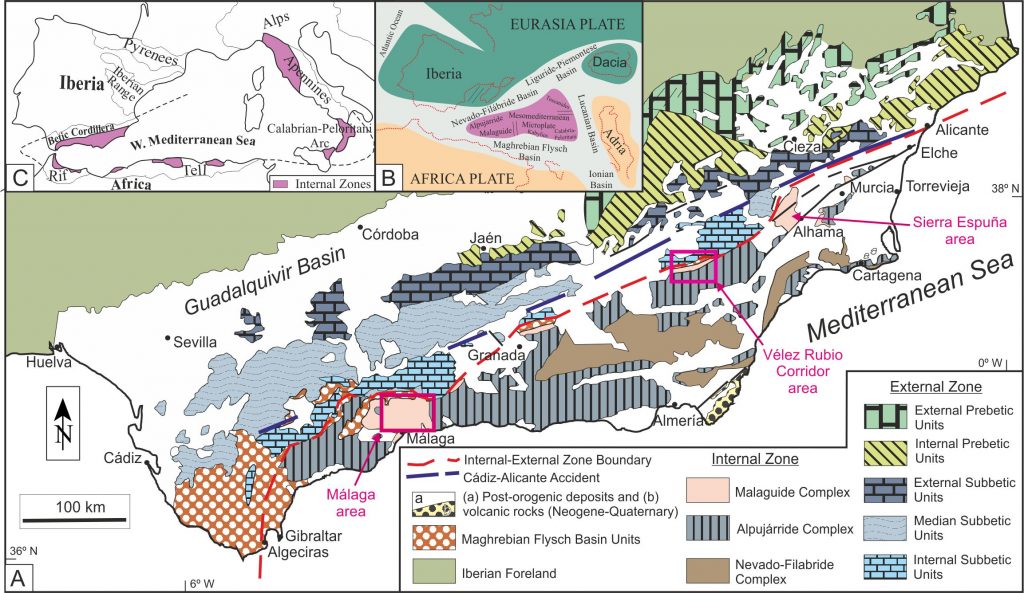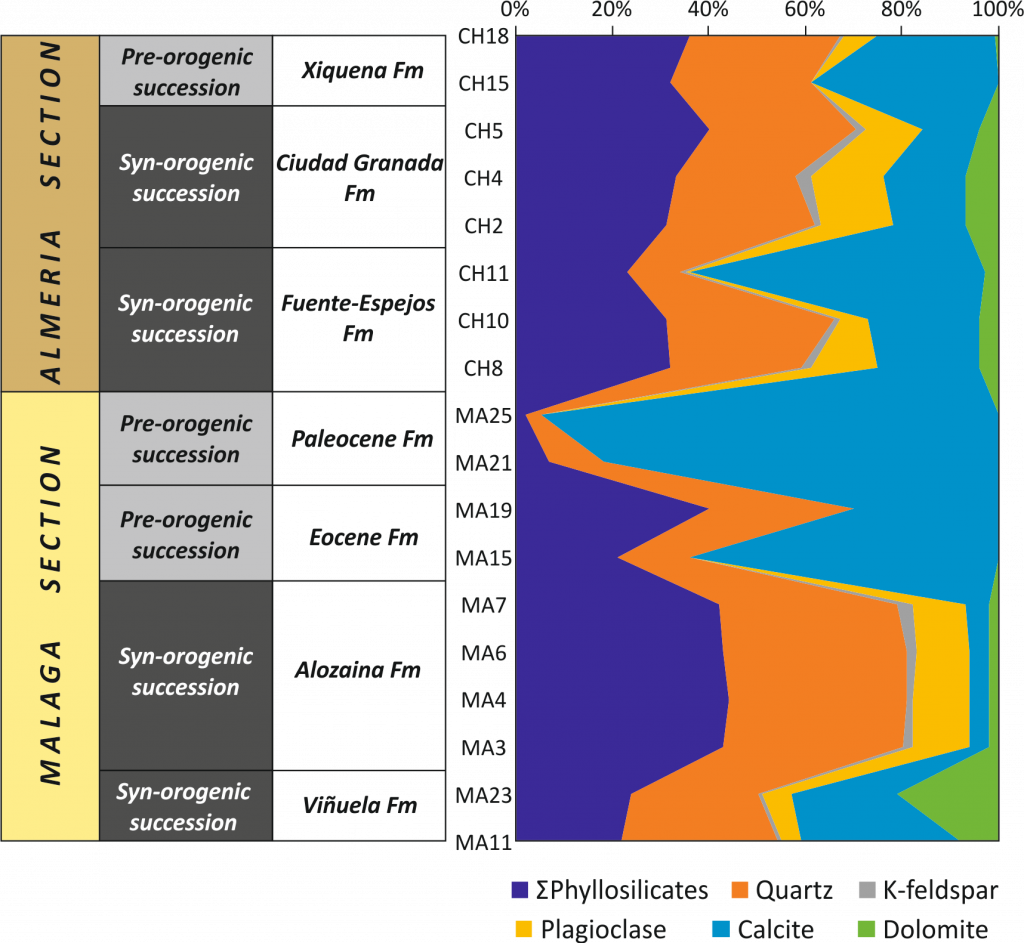The Cenozoic sedimentary cover of the Malaguide Complex (Internal Betic Cordillera, Spain), in the Almería and Málaga areas, consists of a suite of sedimentary successions from continental and shallow-marine to deep-marine environments. Structural and stratigraphic relations, and petrological and geochemical signatures reveal the sedimentary evolution of the Cenozoic Malaguide Complex (CMC) from pre-orogenic (Palocene-Eocene) to syn-orogenic (Oligocene-Early Miocene) stages.

Sandstones detrital modes of the overall succession are heterogeneous testifying to a multi-source area, marked by exhumation of the Malaguide basement terranes and of the Internal Betic Zone (Alpujárride Complex) in lower position. Pre-orogenic and syn-orogenic strata consist of four main depositional sequences: the Mula Group (Paleocene), the Xiquena Group (Eocene) for the preorogenic successions; and Ciudad Granada Group (Oligocene-Aquitanian) and Viñuela Group (Burdigalian) for the synorogenic successions. Pre-orogenic strata evolve from intra-arenite to hybrid arenites to progressive increase of sandstones in abundance of detrital supply from sedimentary cover of the internal Betic units. The unroofing history of the internal Betic Units, predominantly in the Malaguide Complex, is clearly testified in strata of the synorogenic clastic units, where detrital supply is coming from the Malaguide Complex. Sedimentary lithic fragments were derived from the Mesozoic strata of the Malaguide Complex while metamorphic detritus is related to the Internal Betic Zone basement that was exhumed starting from the Oligocene. Pre-orogenic mudrocks mainly show abundance of calcite and dolomite over quartz and phyllosilicates. Syn-orogenic mudrocks, record an abrupt decrease in calcite and dolomite and an increase of phyllosilicate, quartz and feldspars mainly in the Malaga section. The geochemical signatures attest to a compositional variation of the samples from pre-to-synorogenic successions, with palaeoweathering indices showing moderate values and a weak up-section decrease. The Cenozoic Malaguide Complex played a key role in the geodynamic evolution of the Betic Cordillera, representing the key tectonic element of the western Mesomediterranean domains.

Cite as: Critelli, S., Martín-Martín, M., Capobianco, W., Perri, F., 2021. Sedimentary history and palaeogeography of the Cenozoic clastic wedges of the Malaguide Complex, Internal Betic Cordillera, southern Spain. Mar. Pet. Geol. 124, 104775. https://doi.org/https://doi.org/10.1016/j.marpetgeo.2020.104775